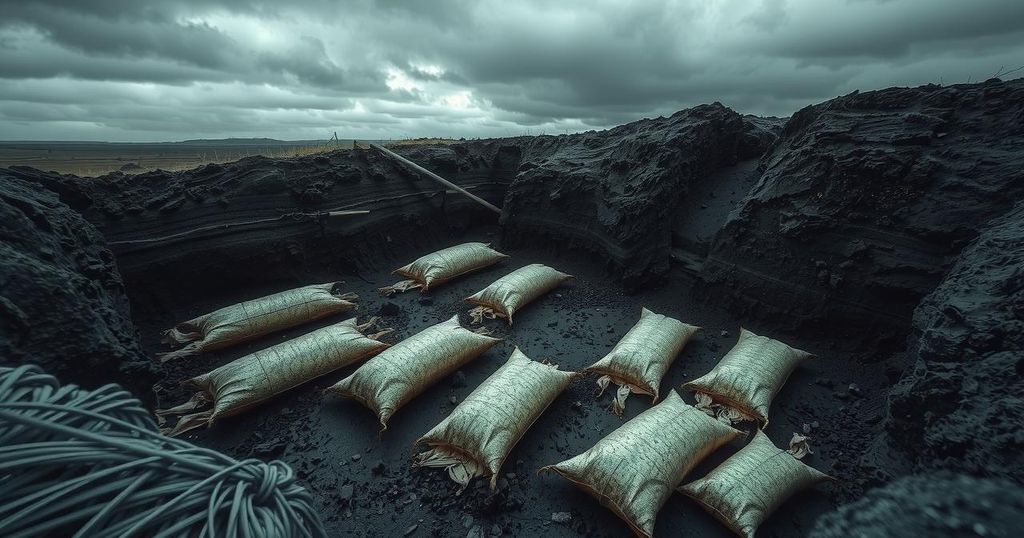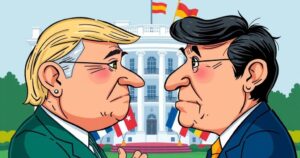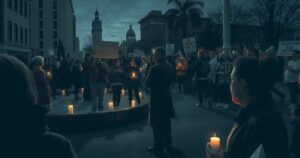Trump’s Misleading Use of Reuters Footage Sparks Controversy

U.S. President Donald Trump misused a Reuters image from Congo, claiming it depicted mass killings of white farmers in South Africa, during a meeting with South African President Cyril Ramaphosa. The image originated from a humanitarian context in Congo, and its misapplication has raised concerns over misinformation and diplomatic discourse.
In a recent Oval Office meeting, President Donald Trump presented a misleading narrative regarding the mistreatment of white farmers in South Africa, showcasing a screenshot of a Reuters video that actually depicted a scene from the Democratic Republic of Congo. During the meeting with South African President Cyril Ramaphosa, Trump claimed, “These are all white farmers that are being buried,” referring to the photograph he held, which ignited controversy regarding its authenticity.
The image, originally published by Reuters on February 3, shows humanitarian workers in Goma, Congo, lifting body bags after violent clashes driven by the M23 rebels, who are backed by Rwanda. This footage, captured by journalist Djaffar Al Katanty, was misidentified by Trump in supporting claims of a genocide against white farmers in South Africa, which have circulated in certain far-right circles.
The online article shown to President Ramaphosa by Trump originated from American Thinker, a conservative website discussing conflicts and racial tensions in South Africa and Congo. Unfortunately, the article did not appropriately label the image, sparking confusion. Instead of providing context, it identified the image solely as a “YouTube screen grab” which linked back to the original Reuters footage related to the Congo.
The White House has opted not to comment on the incident. Andrea Widburg, managing editor at American Thinker, admitted to Reuters that the image was indeed misapplied by Trump, yet she maintained the article’s focus on the alleged pressures faced by white South Africans under current government policies.
Al Katanty, who filmed the original footage, expressed shock upon seeing his work repurposed to promote false claims. “In view of all the world, President Trump used my image… to try to convince President Ramaphosa that in his country, white people are being killed by Black people,” he stated. Al Katanty emphasized the ethical responsibilities of journalists and the implications of using their footage out of context.
The meeting marked an attempt by Ramaphosa to repair relations with the United States amid ongoing criticism from Trump concerning South Africa’s land policies and treatment of its white minority, claims the South African government has consistently denied. During the heated discussion, Trump interrupted the dialogue with a video purportedly demonstrating a genocide occurring against white farmers in South Africa. In his remarks, he painted a bleak picture, asserting, “death, death, death, horrible death,” further adding to the misleading narrative.
This incident underscores the significant potential for misinformation in high-stakes diplomatic engagements, particularly when using unverified visual evidence. As world leaders navigate these complexities, the importance of factual accuracy becomes paramount, especially in discussions that touch upon sensitive racial and social issues.
In summary, President Trump’s use of a Reuters image from Congo to support claims of genocide against white farmers in South Africa has caught public attention and sparked extensive debate. The misrepresentation has not only raised concerns about the integrity of information being presented but also illuminated the challenges surrounding factual reporting in the political arena. As figures like President Ramaphosa engage in diplomacy, the reliance on authentic evidence remains critically important in fostering sound international relations.
Original Source: www.newsbreak.com





